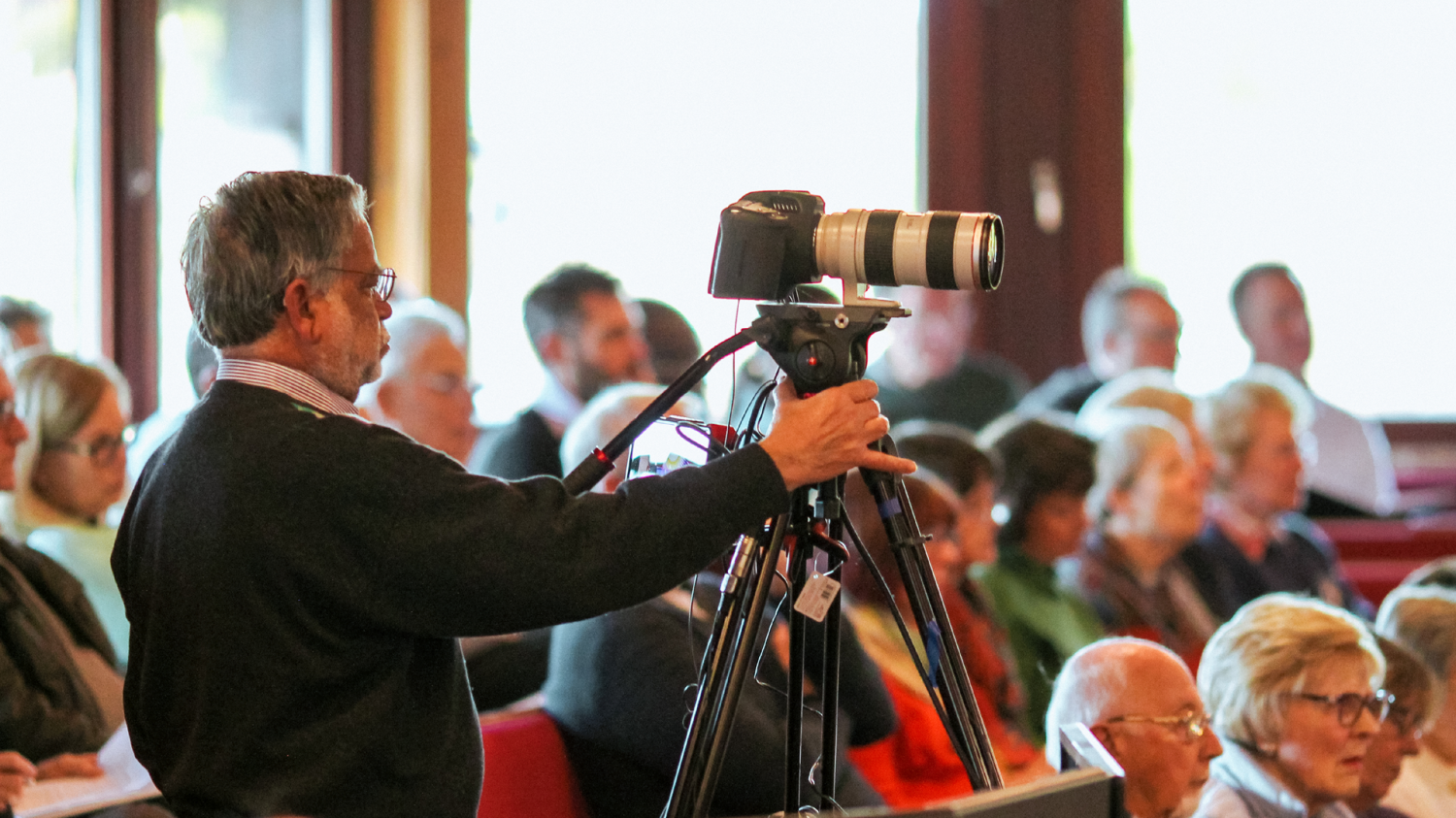
Churches are popular film locations. Hosting a film shoot by a movie or TV company can be very beneficial to a church. It can bring the church into the public eye and encourage the public to come and visit. It can also be a useful source of additional income.
However, there are potential pitfalls to avoid, including the risk of inappropriate content, unfavourable publicity, damage to the fabric and furnishings, and other risks such as copyright violation.
How to plan for filming
To maximise the benefits of filming in a church, and to avoid the risks, careful forethought and planning is essential. Church permission in the form of a faculty may also be needed before going ahead, as well as input from the Communication Team on whether the film theme and content is appropriate.
Read these guidelines before agreeing to filming requests - these guidelines are to assist incumbents, PCCs and churchwardens in the Diocese of Guildford to decide whether to agree to filming and then in planning and managing the shoot. These guidelines are not a blueprint for all occasions.
There are numerous location-finding companies. Some are free, others charge for inclusion. The main ones are:
Location Partnership
UK Film Locations
Location Works
Filming or creating videos has become a regular part of church life for many. The use of video can help engage a wider audience with key communications. Live streaming or creating an online worship service opens up opportunities for others who otherwise may not be able to connect with your church community.
The following guides and resources will help you with the foundational elements and considerations to filming and/or live streaming in your church context. Most of the following were written in the context of the pandemic but many of the principles still stand to help strategically and practically.
• Equipping Online Ministry Guide
• Equipment Recommendations Guide
• Guide to getting started with live streaming
• Guide to setting up equipment in your church building
• Streaming software for churches
The Communications Team are happy to help if you have any questions.
Further work is underway this year (2023) to develop a suite of resources looking at online ministry. Watch this space for more to come.
Those appearing in film or photography will need to have given consent, as religion is a protected feature under GDPR.
If no one from your congregation will be identifiable during filming or photography then you don’t need to gain consent. However, if members of the congregation will be visible, do consider the following:
Data Protection and UK/EU GDPR permissions for adults
Those appearing in film or photography will need to have given consent, as religion is a protected feature under Data Protection and UK/EU GDPR. A photo release form can be signed by adults and must include all the places where the photo or video may be used by the church. Regular attendees at the church need to only sign this once but it should be refreshed regularly, such as every three years. However, new visitors should be asked before the service or event begins.
Data Protection and UK/EU GDPR permissions for children
Videos containing children (under the age of 16) may be used by the church if consent has been given by their parent or guardian, following the same guidelines as above. If a child is over 13, consent is required from both their parent or guardian and the child.
Prepare ahead for filming in your church building
Tell your community your plans for filming and send out the photo release forms to your email list, WhatsApp groups, or Facebook groups – anywhere your community can see it – so they are ready. Have spare copies with you on the day for anyone who has not yet signed. Remember, your regular attendees only need to sign this once every three years.
Create photo and video-free zones
Those who do not give consent to be in a video or photo do not need to sign the consent form. Create a safe space within your church building where they may sit. This could be a side aisle or a few rows at the back. Simple signs will help identify where this space is and make sure that those who are filming or taking photos are aware. At the beginning of the service, remind people and allow them to move.
Consent can be withdrawn
This means you will have to delete videos or images of that person. It is more likely that a church would experience members of their community not giving consent than withdrawing it later, however, it is wise to be prepared for this to happen. The process of withdrawing consent must be as easy as providing consent.
Read the Safer Environments for Churches guidance from the National Safeguarding Team which covers more on GDPR and safeguarding.